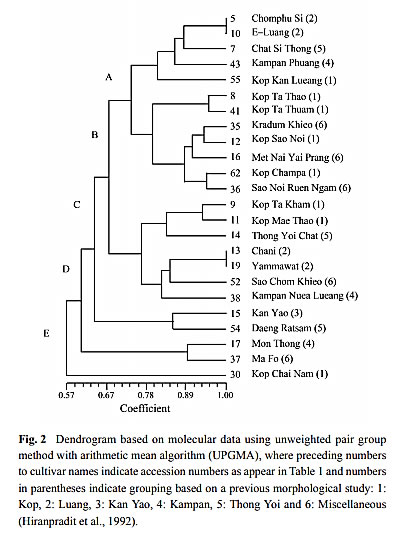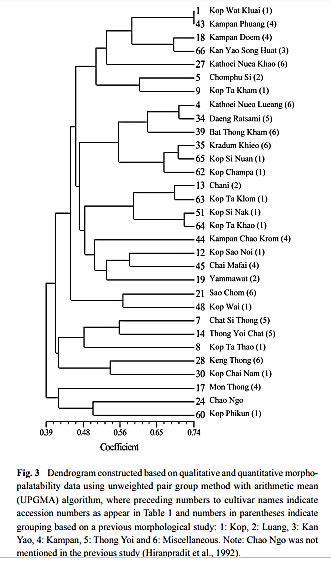
Wisuwat Songnuanaa, Aussanee Pichakumaa, Paweena Traipermaa, Em-orn Rungjangsuwanaa, Umaporn Siriwattanakulaa, Namkhang Leeratsuwanbb, Piyarat Parinyapong Chareonsapcc, Kasem Kulpraditdd, Songpol Somsriee, Sasivimon Chomchalow Swangpol a,*
a Department of Plant Science, Faculty of Science, Mahidol University, Ratchathewi, Bangkok 10400, Thailand.
b Department of Biology, Faculty of Science, Mahidol University, Ratchathewi, Bangkok 10400, Thailand.
c Plant Genetic Conservation Project, Chitralada Villa, Dusit, Bangkok 10303, Thailand.
d Faculty of Environment and Resource Studies, Mahidol University, Salaya, Nakhon Pathom 73170, Thailand.
e Horticultural Research Institute, Department of Agriculture, Ministry of Agriculture and Cooperatives, Chatuchak, Bangkok 10900, Thailand.
Durian is a high-value, tropical fruit well known for its unique, pungent smell and sweet and creamy flesh. Nonthaburi province in central Thailand has been known as a source of top-quality durian cultivars, especially Mon Thong. However, with the recent urbanization and frequent severe weather conditions, these valuable local cultivars are disappearing at an alarming rate. Therefore, there is an urgent need for morpho-palatability as well as molecular information in order to correctly identify and characterize each cultivar.
This study was the first to report durian diversity in Thailand using both morpho-palatability characteristics and molecular marker analysis. Morpho-palatability diversity was assessed in 31 cultivars using a modified descriptor for durian that measured 22 qualitative traits and 33 quantitative traits from the leaves, flowers and fruits. In addition, 24 cultivars were used for genetic diversity analysis based on simple sequence repeat (SSR) markers. The diversity of durian cultivars could be seen from the morphometric analysis.
It was also found that certain characters were more informative than others at characterizing durian cultivars, which could lead to an improvement of cultivar identification. SSR marker profiles were considerably informative in distinguishing cultivars. Molecular data analysis showed that most cultivars were clustered together, with only a few in small, separate clusters. The results from this study should help to improve durian cultivar conservation and breeding for better quality.
Financial Support
The National Research Council of Thailand (NRCT)https://li01.tci-thaijo.org/index.php/anres/article/view/229866



